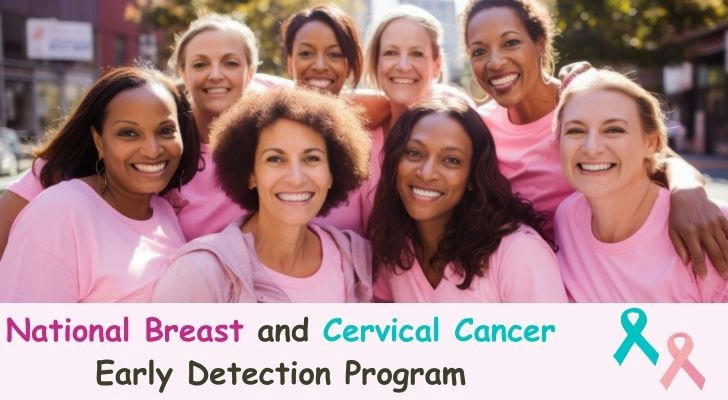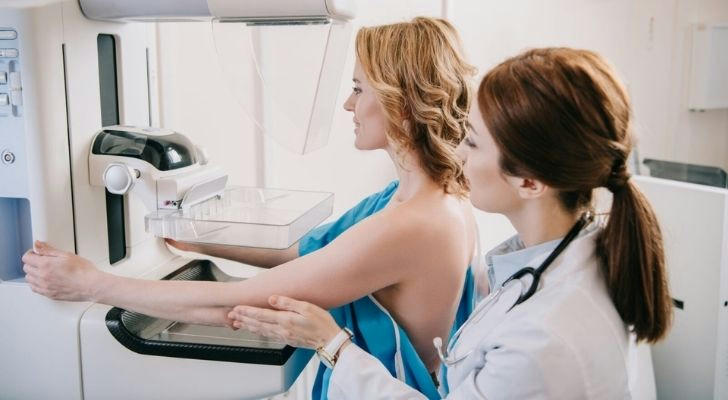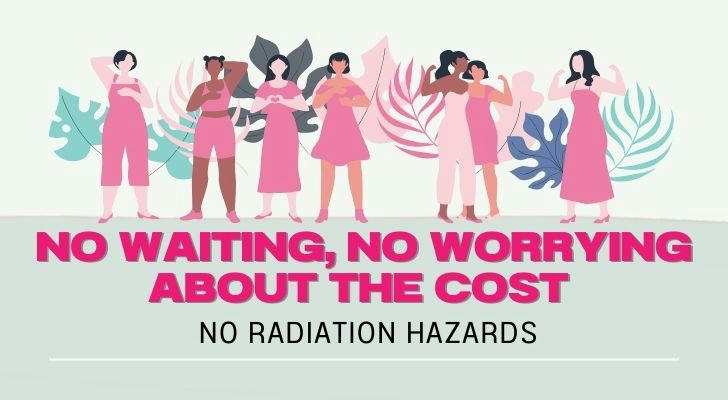How Women Over 40 Can Easily Access Mammogram Screenings
🩺 Mammograms: No waiting, no worrying about the cost and no radiation hazards
Are you worried about whether mammograms are harmful? Are you concerned about waiting for your appointment? Don’t worry! Starting in March 2025, a new program will make mammograms more accessible to women over 40, providing essential breast cancer testing at an affordable price.

📋 1. What is the National Breast and Cervical Cancer Early Detection Program?
National Breast and Cervical Cancer Early Detection Program is an initiative aimed at making breast cancer screenings available to women over 40 who may otherwise face barriers due to cost, insurance, or limited access to healthcare providers. By offering screenings through a network of clinics and health centers, this program provides timely mammograms with no hassle and no worries about excessive radiation exposure. The screening process is efficient, affordable, and safe, giving women the ability to maintain their health while being supported by healthcare professionals every step of the way.
New in 2025: Women aged 40 and older will now be able to access regular mammogram screenings through this initiative. The program is specifically designed to meet the growing need for early breast cancer detection and provide easy access for women to undergo screenings without the financial or logistical barriers that can make them difficult to access.
⚕️ 2. Who Qualifies for Mammogram Screenings?
To benefit from the National Breast and Cervical Cancer Early Detection Program, applicants need to meet the following criteria:
• Age: Women aged 40 and older are eligible for the program.
• Health Status: Women in good health who are seeking a routine screening for breast cancer. Those with a family history or previous history of breast cancer may also access additional screenings through this program.
• Income: The program is designed to assist women with low-to-moderate income levels. If you receive government benefits such as Medicaid or Social Security, you may be eligible for this initiative.
📊 3.Services and advice for every age
National Breast and Cervical Cancer Early Detection Program recognizes that different age groups have unique needs and health risks when it comes to breast cancer detection. The program customizes its services to ensure every woman receives the best care possible based on her age and specific health circumstances.
🔹 Ages 40-50: Routine Screenings for Early Detection
Key Services for Ages 40-50:
• Initial Screening: A baseline mammogram to establish a reference for future exams.
• Breast Health Education: Guidance on how to monitor changes in breast tissue and general breast health.
🔹 Ages 51-60: Increased Frequency of Screenings
Key Services for Ages 51-60:
• Annual Screenings: More frequent screenings for the early detection of any abnormalities.
• Follow-Up Imaging: If mammograms reveal potential issues, follow-up imaging like ultrasounds or MRIs may be used for further evaluation.
🔹 Ages 61-70: Continued Vigilance
Key Services for Ages 61-70:
• Comprehensive Screenings: Mammograms complemented with additional imaging, as needed.
•Personalized Care: Tailored screenings based on specific health history and concerns.
🔹 Ages 70 and Above: Specialized Screening for Older Adults
Key Services for Ages 70+:
• Targeted Screenings: Mammograms designed to address specific health conditions.
• Supportive Services: Access to a network of healthcare providers who understand the complexities of older women’s health, including co-existing medical conditions.

📝 4. How to Apply: Step-by-Step Guide
The application process for the Mammogram Screening Program is simple and straightforward. Here’s how to get started:
🔹 Step 1: Visit the Program Website
• Head to the National Breast and Cervical Cancer Early Detection Program
🔹 Step 2: Complete the Application Form
Fill out the online application or download the printable form. Include all necessary information such as:
• Personal information (name, address, contact details).
• Proof of eligibility (age, income, health status).
• Referral from a healthcare provider (if needed).
🔹 Step 3: Submit Your Documents
Upload or mail the required documents to the address provided on the website.
🔹 Step 4: Schedule Your Screening
Once approved, follow the instructions to schedule your mammogram. Treatment duration may vary, but the process is designed to be quick and efficient.
🏥 5. Additional Resources for Mammogram Screenings
If you do not qualify for the Mammogram Screening Program, consider these alternative resources:
• Local Health Departments: Many health departments offer subsidized mammograms for eligible women.
• Charity Events: Nonprofit organizations, such as Mammography Mobile Units, offer low-cost screenings at scheduled events in various communities.
• Nonprofit Organizations: Several charities host annual events or clinics offering affordable mammograms to those in need.

✅ 6. Conclusion: Stay Proactive and Protect Your Health
Access to mammograms is a crucial step in maintaining breast health, especially for women over 40. With the new Mammogram Screening Program, there are fewer barriers to getting this essential screening. No more waiting for months or worrying about the cost. Early detection can save lives, and this program is designed to help every woman, regardless of age or financial situation, stay proactive about her health.
